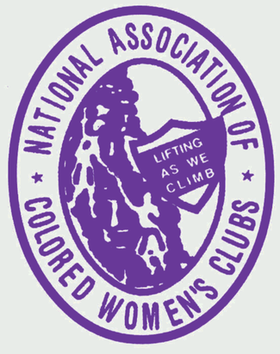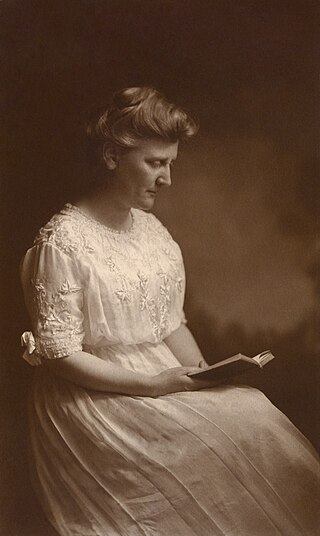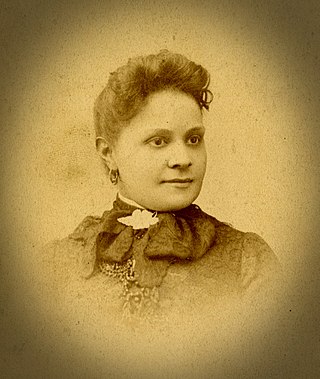
The Nineteenth Amendment to the United States Constitution prohibits the United States and its states from denying the right to vote to citizens of the United States on the basis of sex, in effect recognizing the right of women to vote. The amendment was the culmination of a decades-long movement for women's suffrage in the United States, at both the state and national levels, and was part of the worldwide movement towards women's suffrage and part of the wider women's rights movement. The first women's suffrage amendment was introduced in Congress in 1878. However, a suffrage amendment did not pass the House of Representatives until May 21, 1919, which was quickly followed by the Senate, on June 4, 1919. It was then submitted to the states for ratification, achieving the requisite 36 ratifications to secure adoption, and thereby go into effect, on August 18, 1920. The Nineteenth Amendment's adoption was certified on August 26, 1920.

Highland Beach is a town in Anne Arundel County, Maryland, United States. Per the 2020 census, the population was 118. The town was founded late in the 19th century by affluent African Americans from Washington, D.C., and Baltimore, looking for a summer retreat on the Chesapeake Bay. The town's incorporated status gave it a unique standing in empowering it to maintain its own police force. Celebrities with homes there have included historian and author Alex Haley, actor and comedian Bill Cosby, and tennis champion Arthur Ashe. Street names in the town include Crummell, Dunbar, Henson, Augusta, Douglass, Langston, and Washington, which were chosen to honor leading African Americans.

The National Woman's Party (NWP) was an American women's political organization formed in 1916 to fight for women's suffrage. After achieving this goal with the 1920 adoption of the Nineteenth Amendment to the United States Constitution, the NWP advocated for other issues including the Equal Rights Amendment. The most prominent leader of the National Woman's Party was Alice Paul, and its most notable event was the 1917–1919 Silent Sentinels vigil outside the gates of the White House.

The National Association of Colored Women's Clubs (NACWC) is an American organization that was formed in July 1896 at the First Annual Convention of the National Federation of Afro-American Women in Washington, D.C., United States, by a merger of the National Federation of Afro-American Women, the Woman's Era Club of Boston, and the Colored Women's League of Washington, DC, at the call of Josephine St. Pierre Ruffin. From 1896 to 1904 it was known as the National Association of Colored Women (NACW). It adopted the motto "Lifting as we climb", to demonstrate to "an ignorant and suspicious world that our aims and interests are identical with those of all good aspiring women." When incorporated in 1904, NACW became known as the National Association of Colored Women's Clubs (NACWC).

Mary White Ovington was an American suffragist, journalist, and co-founder of the National Association for the Advancement of Colored People (NAACP).

Mary Church Terrell was an American civil rights activist, journalist, teacher and one of the first African-American women to earn a college degree. She taught in the Latin Department at the M Street School —the first African American public high school in the nation—in Washington, DC. In 1895, she was the first African-American woman in the United States to be appointed to the school board of a major city, serving in the District of Columbia until 1906. Terrell was a charter member of the National Association for the Advancement of Colored People (1909) and the Colored Women's League of Washington (1892). She helped found the National Association of Colored Women (1896) and served as its first national president, and she was a founding member of the National Association of College Women (1923).

Frances "Fannie" Barrier Williams was an African American educator, civil rights, and women's rights activist, and the first black woman to gain membership to the Chicago Woman's Club. She became well known for her efforts to have black people officially represented on the Board of Control of the World's Columbian Exposition in 1893. She was also a musician, a portraitist and studied foreign languages.

Mary Burnett Talbert was an American orator, activist, suffragist and reformer. In 2005, Talbert was inducted into the National Women's Hall of Fame.
The National Equal Rights League (NERL) is the oldest nationwide human rights organization in the United States. It was founded in Syracuse, New York in 1864 dedicated to the liberation of black people in the United States. Its origins can be traced back to the emancipation of slaves in the British West Indies in 1833. The league emphasized moral reform and self-help, aiming "to encourage sound morality, education, temperance, frugality, industry, and promote everything that pertains to a well-ordered and dignified life." Black leaders formed state and local branches of the league which drew many members, which caused the society to grow quickly, in areas such as Harrisburg, Pennsylvania, where people such as Thomas Morris Chester joined.
African-American women began to agitate for political rights in the 1830s, creating the Boston Female Anti-Slavery Society, Philadelphia Female Anti-Slavery Society, and New York Female Anti-Slavery Society. These interracial groups were radical expressions of women's political ideals, and they led directly to voting rights activism before and after the Civil War. Throughout the 19th century, African-American women such as Harriet Forten Purvis, Mary Ann Shadd Cary, and Frances Ellen Watkins Harper worked on two fronts simultaneously: reminding African-American men and white women that Black women needed legal rights, especially the right to vote.

The Woman Suffrage Procession on March 3, 1913, was the first suffragist parade in Washington, D.C. It was also the first large, organized march on Washington for political purposes. The procession was organized by the suffragists Alice Paul and Lucy Burns for the National American Woman Suffrage Association (NAWSA). Planning for the event began in Washington in December 1912. As stated in its official program, the parade's purpose was to "march in a spirit of protest against the present political organization of society, from which women are excluded."
The Boston Women's Heritage Trail is a series of walking tours in Boston, Massachusetts, leading past sites important to Boston women's history. The tours wind through several neighborhoods, including the Back Bay and Beacon Hill, commemorating women such as Abigail Adams, Amelia Earhart, and Phillis Wheatley. The guidebook includes seven walks and introduces more than 200 Boston women.

Coralie Franklin Cook was an American educator, public speaker, and government official. She is also the first known descendant among those enslaved at Thomas Jefferson's Monticello estate to graduate from college. Cook, along with Mary Church Terrell, Anna J. Cooper, Angelina Weld Grimke, and Nannie Helen Burroughs, "exemplified the third generation of African American woman suffragists who related to both the Black and the white worlds."

Harriet Redmond, also known as Hattie Redmond, was an African-American suffragist who lived and worked in Portland, Oregon. Born in St. Louis, Missouri, she moved to Oregon at a young age where she then became an active member of the suffragist movement.

Helen Appo Cook was a wealthy, prominent African-American community activist in Washington, D.C., and a leader in the women's club movement. Cook was a founder and president of the Colored Women's League, which consolidated with another organization in 1896 to become the National Association of Colored Women (NACW), an organization still active in the 21st century. Cook supported voting rights and was a member of the Niagara Movement, which opposed racial segregation and African American disenfranchisement. In 1898, Cook publicly rebuked Susan B. Anthony, president of the National Woman's Suffrage Association, and requested she support universal suffrage following Anthony's speech at a U.S. Congress House Committee on Judiciary hearing.

Maude E. Craig Sampson Williams was an American suffragist, teacher, civil rights leader, and community activist in El Paso, Texas. In June 1918, she formed the El Paso Negro Woman's Civic and Equal Franchise League and requested membership in the National American Woman Suffrage Association (NAWSA) through the Texas Equal Suffrage Association (TESA), but was denied. Williams organized African-American women to register and vote in the Texas Democratic Party primary in July 1918. She was one of the founders and a charter member of the El Paso chapter of the NAACP, which was the first chapter in the state of Texas. Williams served as the vice president of the El Paso chapter from 1917 to 1924 and remained active in the NAACP until her death. Williams played a significant role in the desegregation of Texas Western College in 1955, which was the first undergraduate college in Texas to be desegregated by a court order other than that of the Supreme Court of the United States. Midwestern University (now known as Midwestern State University was previously ordered to desegregate in 1954 by the SCOTUS immediately following the Brown v. Board of Education ruling.
Bertha Grant Higgins was an American suffragist, civil rights activist and clubwoman. She was involved in supporting women's suffrage in Rhode Island. She strongly supported the Dyer Anti-Lynching bill and worked towards equal rights for African Americans.

Margaret Briggs Gregory Hawkins, worked as a schoolteacher and later became known for her activism on behalf of African Americans and women. She was inducted into the Maryland Women's Hall of Fame in 2021.


















